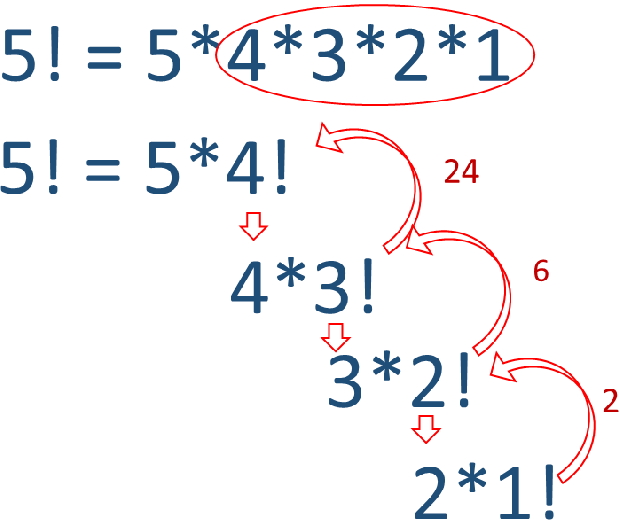User defined functions ( UDF)
Defining a function
def my_fun():
print("Welcome")
my_fun() # Calling the functionPassing parameter to function
We will pass one integer to the function and display the sum by adding 10 to it.def my_fun(n): # function starts here
print(n+10)
# function ends here
my_fun(5)15
Python functions declaring and passing parameters with return value and calling the function
Note that we have maintained left indentation within the function.
We will pass more than one parameter to the function
def my_fun(n1,n2):
return n1+n2
print(my_fun(12,15)) # 27def my_welcome(abc):
print("Welcome ", abc)
my_welcome("Alex") # Welcome AlexReturning data from function
def my_sum(a, b):
sum1=a+b
return sum1
print("Sum = ",my_sum(5,8))Sum = 13Passing list to function
We will pass a list to function and return the sum of all the elementsdef my_sum(my_list):
sum1=0
for i in my_list:
sum1=sum1+i
return sum1
my_list=[1,5,7,12]
print("Sum = ",my_sum(my_list))Sum = 25Returning a list from a function
def my_details(my_marks):
total=sum(my_marks)
avg=total/len(my_marks)
a=[total,avg,len(my_marks)]
return a
my_marks=[4,3,2,11]
marks_final=my_details(my_marks)
print("Details = {}".format(marks_final))Details = [20, 5.0, 4]Passing string parameter to function
def my_string(str1,str2):
str3=str1 + str2
return str3
str_final=my_string('Welcome to',' Python')
print("Here is your final string : ",str_final)Here is your final string : Welcome to PythonDefault Arguments of function
We will not use any parameter so python will use its default value.def my_details(my_language='Python'):
print("Welcome to {}".format(my_language))
my_details() # No parameter is passed
my_details('PHP') # One string is passed Welcome to Python
Welcome to PHPIf any argument does not have a default value then we must supply that while calling the function. We can have any number of arguments with default value, but once we have default value then all arguments to the right of it must have default value.
This code will generate error. non-default argument follows default argument
def my_details(my_language='Python',my_database):
print("Welcome to {} with {}".format(my_language,my_database))
my_details('PHP','MySQL')def my_details(my_database,my_language='Python'):
print("Welcome to {} with {}".format(my_language,my_database))
my_details('PHP','MySQL')Welcome to MySQL with PHPFunction returning more than 1 parameters
Python functions can return multiple values.def my_fun(n1,n2):
return n1+n2,n1-n2
result1,result2=my_fun(12,15)
print("Sum = ", result1)
print("Subtraction = ", result2)Sum = 27
Subtraction = -3def my_welcome(abc1,abc2):
print("Welcome ", abc1 ,'to ', abc2)
my_welcome("Alex", "Python")Welcome Alex to Python*args **args
This function will generate error.def my_fun(i1,i2): # can take two arguments
return i1+i2
print(my_fun(2,3,4)) # error We can pass any number of arguments to the function by using *
def my_fun(*args): # can receive any number of arguments
sum1=0
for i in args:
sum1=sum1+i
return sum1
print(my_fun(2,3,4)) # 9 , passing 3 arguments
print(my_fun(2,2,3,4)) # 11, passing 4 arguments ** to pass key and value pairs
We can pass both key and its value to the function by using **.def my_fun(**kwargs): # key value pair as input
print(kwargs['c']) # plus2net
for key, value in kwargs.items():
print ("%s : %s" %(key, value))
my_fun(a=' Welcome',b=' to',c=' plus2net') plus2net
a : Welcome
b : to
c : plus2netdef greet_person(name, **attributes):
greeting = f"Hello, {name}!"
for attr, value in attributes.items():
greeting += f" Your {attr} is {value}."
return greeting
print(greet_person("Alex", age=30, city="New Delhi", hobby="painting"))Hello, Alex! Your age is 30. Your city is New Delhi. Your hobby is painting.Docstrings
We can include details about the function for user understanding by writing some text about the function. This we can do by using three single quotes or by using three double quotes.About Docstrings used in class , module, function and methods
def my_add(x,y):
'''Takes two inputs and returns the sum'''
return x+y
print(my_add(5,7)) #12
print(my_add.__doc__)Takes two inputs and returns the sumprint(len.__doc__)
print(str.__doc__)
print(int.__doc__)
print(print.__doc__)Using function from different file
Here is our function my_add() kept inside the file all_fun.pyall_fun.py
def my_add(x,y):
return("Sum :", x+y)main.py
from all_fun import my_add
a,b=4,5
print(my_add(a,b))('Sum :', 9)Recursive function
Python recursive functions to call same function within the function code to get factorial of input
Function which calls itself during its execution.
To prevent recursive function to execute infinitely we need to keep conditional statement to come out of recursive.
Factorial of a number is multiplication of all number less than the input number.
n! = n*(n-1)*(n-2)*(n-3) …. .* 1
Let us understand this by using one example.
Factorial of a number
def fact(n):
print("The number is : ",n)
if n==1:
return 1
else:
result = n*fact(n-1)
print("Part factorial = ", result)
return result
print(" Final factorial :",fact(5))The number is : 5
The number is : 4
The number is : 3
The number is : 2
The number is : 1
Part factorial = 2
Part factorial = 6
Part factorial = 24
Part factorial = 120
Final factorial : 120import sys
print(sys.getrecursionlimit()) # output 1000
sys.setrecursionlimit(2000) # new limit to 2000
print(sys.getrecursionlimit()) # output 2000Sample codes using recursive functions
Sum of digits of an input numberGreatest Common Divisor & Lowest Common Multiple (LCM) of two input numbers
There are some functions which are defined as part of the core Python. These functions are always available for use. We call them built in functions in Python.
Download the above full source code from Github or run the code in your Google colab platform.
https://github.com/plus2net/Python-basics/blob/main/online_class_functions_v1.ipynb
https://github.com/plus2net/Python-basics/blob/main/online_class_functions_v1.ipynb
Questions on Functions Global, local and non-local variables Builtin Functions

Subhendu Mohapatra
Author
🎥 Join me live on YouTubePassionate about coding and teaching, I publish practical tutorials on PHP, Python, JavaScript, SQL, and web development. My goal is to make learning simple, engaging, and project‑oriented with real examples and source code.
Subscribe to our YouTube Channel here
This article is written by plus2net.com team.
https://www.plus2net.com

 Python Video Tutorials
Python Video Tutorials